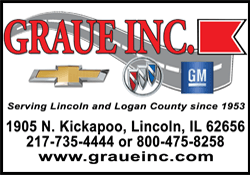Israel controls 50% of Gaza after razing land to expand its buffer zone
[April 07, 2025]
By SAM MEDNICK
TEL AVIV, Israel (AP) — Israel has dramatically expanded its footprint
in the Gaza Strip since relaunching its war against Hamas last month. It
now controls more than 50% of the territory and is squeezing
Palestinians into shrinking wedges of land.
The largest contiguous area the army controls is around the Gaza border,
where the military has razed Palestinian homes, farmland and
infrastructure to the point of uninhabitability, according to Israeli
soldiers and rights groups. This military buffer zone has doubled in
size in recent weeks.
Israel has depicted its tightening grip as a temporary necessity to
pressure Hamas into releasing the remaining hostages taken during the
Oct. 7, 2023, attack that started the war. But the land Israel holds,
which includes a corridor that divides the territory's north from south,
could be used for wielding long-term control, human rights groups and
Gaza experts say.
Prime Minister Benjamin Netanyahu said last week that even after Hamas
is defeated, Israel will keep security control in Gaza and push
Palestinians to leave.
The demolition close to the Israeli border and the systematic expansion
of the buffer zone has been going on since the war began 18 months ago,
five Israeli soldiers told The Associated Press.
“They destroyed everything they could, they shot everything that looks
functioning ... (the Palestinians) will have nothing to come back, they
will not come back, never,” a soldier deployed with a tank squad
guarding the demolition teams said. He and four other soldiers spoke to
the AP on condition of anonymity for fear of reprisals.
A report documenting the accounts of soldiers who were in the buffer
zone was released Monday by Breaking The Silence, an anti-occupation
veterans group. A handful of soldiers -- including some who also spoke
to AP -- described watching the army turn the zone into a vast
wasteland.
“Through widespread, deliberate destruction, the military laid the
groundwork for future Israeli control of the area,” said the group.

Asked about the soldiers’ accounts, the Israeli army said it is acting
to protect its country and especially to improve security in southern
communities devastated by the Oct. 7 attack, in which some 1,200 people
were killed and 251 taken hostage. The army said it does not seek to
harm civilians in Gaza, and that it abides by international law.
Carving Gaza into sections
In the early days of the war, Israeli troops forced Palestinians from
communities near the border and destroyed the land to create a buffer
zone more than a kilometer (0.62 miles) deep, according to Breaking The
Silence.
Its troops also seized a swath of land across Gaza known as the Netzarim
Corridor that isolated the north, including Gaza City, from the rest of
the narrow, coastal strip, home to more than 2 million people.
When Israel resumed the war last month, it doubled the size of the
buffer zone, pushing it as far as 3 kilometers (1.8 miles) into Gaza in
some places, according to a map issued by the military.
The buffer zone and the Netzarim Corridor make up at least 50% of the
strip, said Yaakov Garb, a professor of environmental studies at Ben
Gurion University, who has been examining Israeli-Palestinian land use
patterns for decades.

Last week, Netanyahu said Israel intends to create another corridor that
slices across southern Gaza, cutting off the city of Rafah from the rest
of the territory. Israel’s control of Gaza is even greater taking into
account areas where it recently ordered civilians to evacuate ahead of
planned attacks.
Neighborhoods turned into rubble
Hundreds of thousands of Palestinians used to live in the land that now
makes up Israel's buffer zone, an area that was key to Gaza's
agricultural output.
Satellite images show once-dense neighborhoods turned to rubble, as well
as nearly a dozen new Israeli army outposts since the ceasefire ended.
When the ceasefire was announced in January, Nidal Alzaanin went back to
his home in Beit Hanoun in northern Gaza. His property stood on the edge
of the buffer zone and lay in ruins.
[to top of second column]
|

Israeli military vehicles move inside the Gaza Strip, as seen from
southern Israel, Tuesday, Jan. 7, 2025. (AP Photo/Ariel Schalit,
File)

All that remains is a photo of him and his wife on their wedding
day, a drawing of his son’s face on a porcelain plate and the
carcass of a 150-year-old sycamore tree planted by his
great-grandfather. His greenhouse was reduced to twisted scraps of
metal.
The 55-year-old farmer pitched a tent in the rubble, hoping to
rebuild his life. But when Israel resumed its campaign and seized
his land, he was again uprooted.
“It took 20 years to build a house and within five minutes they
destroyed all my dreams and my children’s dreams,” he said from Gaza
City, where he now shelters.
Israel’s bombardment and ground offensives throughout the war have
left vast swaths of Gaza’s cities and towns destroyed. But the
razing of property inside the buffer zone has been more methodical
and extensive, soldiers said.
The five soldiers who spoke to the AP said Israeli troops were
ordered to destroy farmland, irrigation pipes, crops and trees as
well as thousands of buildings, including residential and public
structures, so that militants had nowhere to hide.
Several soldiers said their units demolished more buildings than
they could count, including large industrial complexes. A soda
factory was leveled, leaving shards of glass and solar panels strewn
on the ground.
Soldier alleges buffer zone was a ‘kill' zone
The soldiers said the buffer zone had no marked boundaries, but that
Palestinians who entered were shot at.
The soldier with the tank squad said an armored bulldozer flattened
land creating a “kill zone” and that anyone who came within 500
meters of the tanks would be shot, including women and children.
Visibly shaken, he said many of the soldiers acted out of vengeance
for the Oct. 7 attack.
“I came there because they kill us and now we’re going to kill them.
And I found out that we’re not only killing them. We’re killing
them, we’re killing their wives, their children, their cats, their
dogs, and we destroyed their houses,” he said.
The army said its attacks are based on intelligence and that it
avoids “as much as possible, harm to non-combatants.”
Long-term hold?
It is unclear how long Israel intends to hold the buffer zone and
other territory inside Gaza.
In announcing the new corridor across southern Gaza, Netanyahu said
Israel aims to pressure Hamas to release the remaining 59 hostages,
of whom 35 are believed dead. He also said the war can only end when
Hamas is destroyed and its leaders leave Gaza, at which point Israel
would take control of security in the territory.
Then, Netanyahu said, Israel would implement U.S. President Donald
Trump’s call to move Palestinians from Gaza, what Israel calls
“voluntary emigration.”
Some Israel analysts say the purpose of the buffer zone isn’t to
occupy Gaza, but to secure it until Hamas is dismantled. “This is
something that any sane country will do with regard to its borders
when the state borders a hostile entity,” said Kobi Michael, a
senior researcher at two Israeli think tanks, the Institute for
National Security Studies and the Misgav Institute.
But rights groups say forcibly displacing people is a potential war
crime and a crime against humanity. Within Gaza’s buffer zones,
specifically, it amounts to “ethnic cleansing,” because it was clear
people would never be allowed to return, said Nadia Hardman, a
researcher at Human Rights Watch.
Israel called the accusations baseless and said it evacuates
civilians from combat areas to protect them.
___
Associated Press reporter Michael Biesecker contributed from
Washington.
All contents © copyright 2025 Associated Press. All rights reserved |